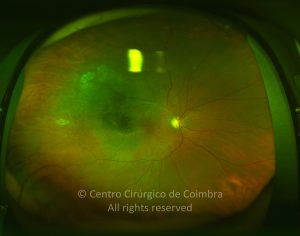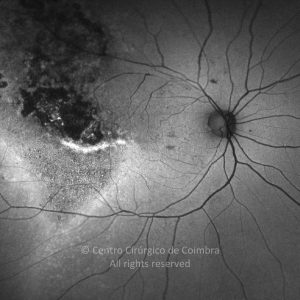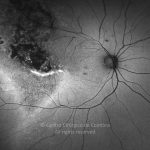Radiation retinopathy is an occlusive microangiopathy secondary to endothelial cell loss and capillary closure occurring after ionizing radiation treatment. It usually leads to irreversible visual impairment.
This disease has been seen after both radioactive plaque and external beam radiation for ocular, orbital, and intracranial tumors. The incidence of radiation retinopathy is greater when the treatment site is closer to the eye and the cephalic radiation dose is high.
Clinical manifestations of the disorder include macular edema and nonproliferative and proliferative retinopathy. Although damage to photoreceptors has been seen, the inner retinal layers and retinal vascular cells are most affected, causing vessel closure and ischemic retinopathy similar to that in diabetic retinopathy. Signs include cotton-wool spots, retinal hemorrhages, microaneurysms, perivascular sheathing, capillary telangiectasis, macular edema, and disc edema. Extensive retinal ischemia can lead to neovascularization of the retina, iris, and disc.









